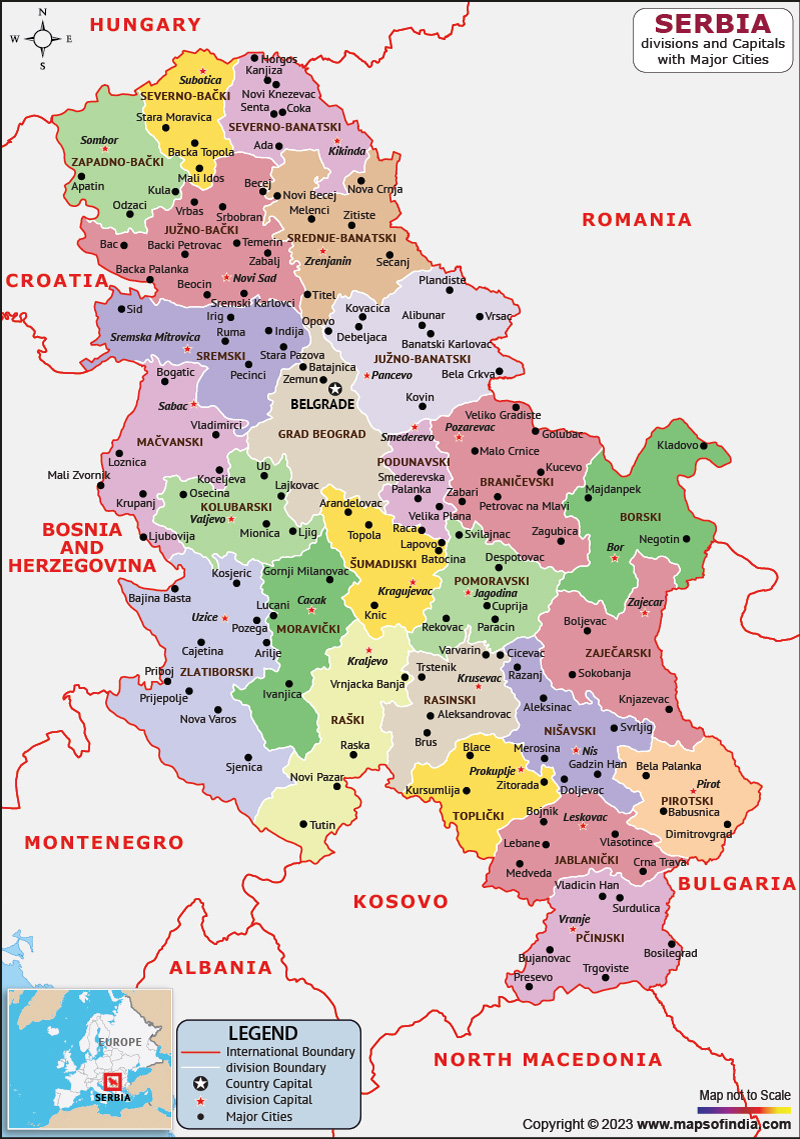Serbia, also known as the Republic of Serbia, is a nation located at the meeting point of the Balkans and the Pannonian Basin. With a total area of 88,499 km2, Serbia ranks 111 in the world. The total area of Serbia is 19,194 km2 of arable land and 19,499 km2 of forest. Serbia fits the International Monetary Fund's (IMF) definition of a developing nation due to its weaker economic performance.
Belgrade, the nation's capital, is also its biggest city. It is also referred to as the White City. The fortress of the city was given this name because it appeared white when viewed from the river.
The city is renowned as one of Europe's premier nightlife hotspots, particularly during the summer when nightclubs on the water are open.
History
1918 saw the establishment of the Kingdom of Serbs, Croats, and Slovenes. In 1929, Yugoslavia was given a new name. The northernmost part of the former State Union of Serbia and Montenegro, Serbia was once the political and cultural hub of Yugoslavia.
Montenegro decided to leave the State Union in 2006 following a referendum in favor of independence. As the successor state to the State Union of Serbia and Montenegro, Serbia was therefore required to formally declare its independence on June 5, 2006.
Culture
Eastern Orthodox ethics and doctrine form the foundation of Serbian culture. Through the independent Serbian church that he founded in 1219, Saint Sava represented Serbian orthodoxy. Serbian leaders, saints, writers, artists, architects, institutions, as well as their thoughts, philosophies, and entire way of life, have all contributed to the spiritual legacy that has been lived by the Serbian people.
Language
In the majority of Serbia, the Serbian language is spoken. The Bosnian and Croatian languages, which are spoken in some regions of Serbia, are nearly identical to Serbian, while many people who speak Bulgarian in south-eastern Serbia use the Torlakian dialect, which is regarded as one of the dialectal transitions between Bulgarian and Serbian.
Geography
The central region of Serbia is made up of mountains and hills. The Dinaric Alps are present along its western border, and the Carpathian and Rhodope mountain ranges are present along its eastern border. The Šumadija hills lie between these flanking mountains which are the core of the medieval Serbian state. According to the region's main divisions in landforms and climate, there are three main soil types. Black earth soils with high levels of organic matter are typical of the subhumid plains and tablelands of the Vojvodina to the north and east of the Danube. These soils were formed from the decomposing root systems of countless generations of local grasses.
| Official name | Republic of Serbia |
| Capital | Belgrade |
| Population | 68.3 lakhs |
| Area | 88,499 km² |
| Language | Serbian |
| Currency | Dinar |
| Religion | Serbian |
| Major cities | Belgrade, Novi Sad, Nis |
FAQs
Q1.What is the official language of Serbia?
Serbian is the official language of Serbia.
Q2.What is the capital of Serbia?
Belgrade is the capital of Serbia
Q3.What is the currency of Serbia?
Dinar is the currency of Serbia.
Q4.What is the climate of Serbia?
In mountainous areas above 1,000 m altitude, a continental climate predominates. The country's southwest is bordered by climates from the Mediterranean, the subtropics, and the continent.
Last Updated on: May 02, 2023
